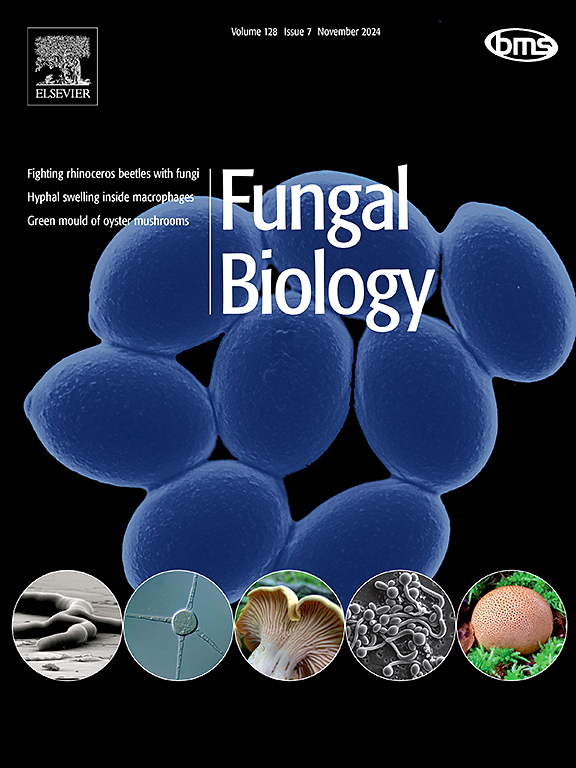A cosmopolitan Serendipita forms mycothalli with sub-Antarctic leafy liverworts
IF 2.9
3区 生物学
Q2 MYCOLOGY
引用次数: 0
Abstract
The occurrence of mycothalli, symbioses between liverworts and fungi, is poorly documented in sub-Antarctica, and biogeographical patterns in Serendipita, the main fungal genus forming the symbiosis, remain understudied. Here, 83 specimens of 16 leafy liverwort species were sampled from sub-Antarctic South Georgia and were examined for mycothalli. Microscopy was used to enumerate fungal structures in liverwort tissues, and sequencing of fungal ribosomal DNA was used to determine the taxonomic and biogeographical affinities of the fungi. Stained hyphal coils, a defining feature of the symbiosis, were found to be frequent (>40% of stem length colonised) in Barbilophozia hatcheri, Cephaloziella varians and Lophoziopsis excisa. A single species of Serendipita, based on a 3% cut-off for ITS2 region sequence divergence, was a frequent colonist of these liverworts. A further 18 basidiomycete and ascomycete taxa colonised other liverwort species. The presence of the Serendipita species was positively associated with the occurrence of stained hyphal coils in stem epidermal cells. Phylogenetic analyses, incorporating worldwide accessions from leafy liverwort-associated Serendipita, showed that the same species, which also occurs in Chile, mainland Europe and on Svalbard, is apparently the sole symbiont of sub- and maritime Antarctic leafy liverworts, and indicated much higher species richness of the genus outside Antarctica.
一种世界性的 Serendipita 与亚南极叶状肝草形成菌丝体
在亚南极洲,关于苔类和真菌之间的共生真菌的发生记录很少,而形成共生关系的主要真菌属Serendipita的生物地理格局仍未得到充分研究。在这里,从南乔治亚亚南极采集了16种叶苔类植物的83个标本,并进行了真菌检测。利用显微镜技术对肝苔组织中的真菌结构进行了枚举,并利用真菌核糖体DNA测序来确定真菌的分类和生物地理亲缘关系。染色菌丝圈是共生关系的一个决定性特征,在孵化场、变异头孢菌和切除头孢菌中发现很常见(占茎长40%)。根据ITS2区域序列差异的3%截止值,Serendipita的一个单一物种是这些苔类的频繁殖民者。另有18个担子菌和子囊菌分类群定植了其他苔类植物。Serendipita种的存在与茎表皮细胞中染色菌丝圈的发生呈正相关。系统发育分析表明,在智利、欧洲大陆和斯瓦尔巴群岛上也有叶苔属植物,这一物种显然是南极海底和海洋叶苔属植物的唯一共生体,并表明该属在南极洲以外的物种丰富度要高得多。
本文章由计算机程序翻译,如有差异,请以英文原文为准。
求助全文
约1分钟内获得全文
求助全文
来源期刊

Fungal biology
MYCOLOGY-
CiteScore
5.80
自引率
4.00%
发文量
80
审稿时长
49 days
期刊介绍:
Fungal Biology publishes original contributions in all fields of basic and applied research involving fungi and fungus-like organisms (including oomycetes and slime moulds). Areas of investigation include biodeterioration, biotechnology, cell and developmental biology, ecology, evolution, genetics, geomycology, medical mycology, mutualistic interactions (including lichens and mycorrhizas), physiology, plant pathology, secondary metabolites, and taxonomy and systematics. Submissions on experimental methods are also welcomed. Priority is given to contributions likely to be of interest to a wide international audience.
 求助内容:
求助内容: 应助结果提醒方式:
应助结果提醒方式:


